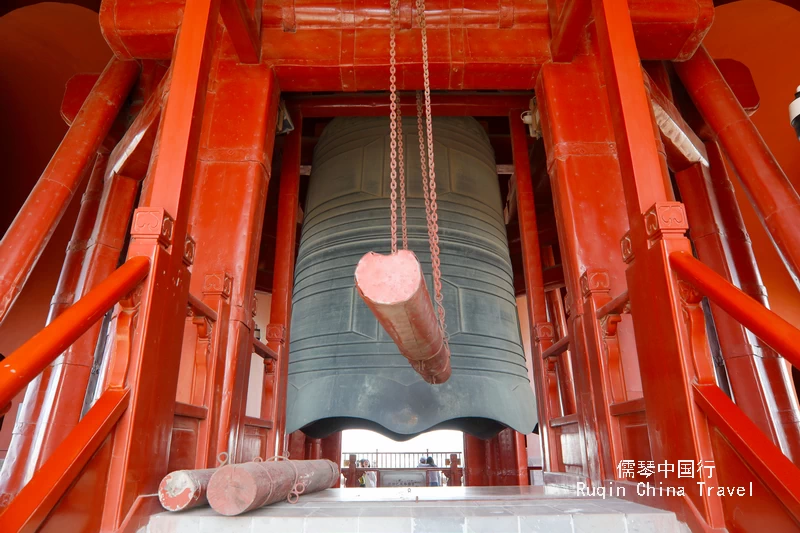At the northern tip of Beijing’s Central Axis, a towering piece of history quietly commands attention—the Beijing Bell Tower. The Bell Tower is a key landmark in the UNESCO-listed Beijing Central Axis, a cultural spine of the old city. Every stone here speaks of imperial order and ancient rhythms.
This guide will help you uncover the tower’s fascinating stories, unique design, and powerful symbolism. So get ready to travel back in time. By the end of your visit, you won’t just hear a bell—you’ll feel the soul of historic Beijing.
1. A Time Monument on the Central Axis
As you reach the north end of Di’anmen Outer Street, two majestic towers immediately catch your eye. The red-walled Drum Tower stands proudly in front, while the gray-and-green Bell Tower rises just behind. This unusual front-and-back layout breaks the traditional side-by-side placement seen in other cities. Instead, it creates a striking finale to Beijing Central Axis, the historic spine of the old capital.
Interestingly, locals describe the layout as: “Drum Tower in front, Bell Tower behind; the drum is stout, the bell is slim.” This charming contrast reflects the smart planning of ancient Beijing.
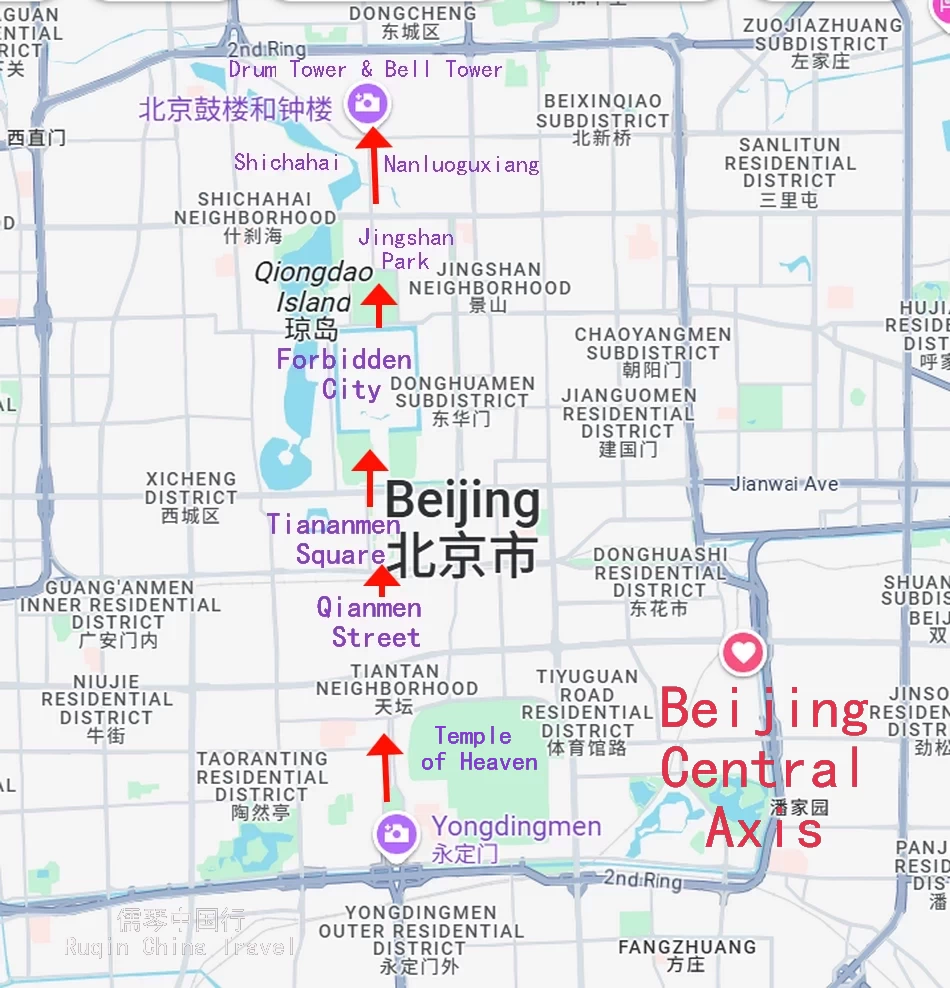
The Bell Tower was first built in 1272, during the Yuan Dynasty. However, fire and time took their toll. The current tower dates back to 1745, rebuilt under the order of Emperor Qianlong. To prevent more fires, builders used solid brick and stone—a rare choice in ancient Chinese architecture, which usually relied on wood.
Today, the tower stands 47.9 meters tall, with a graceful silhouette that narrows as it rises. Additionally, the top features black glazed tiles trimmed in green. It’s bold yet elegant—especially when viewed beside the broader Drum Tower.
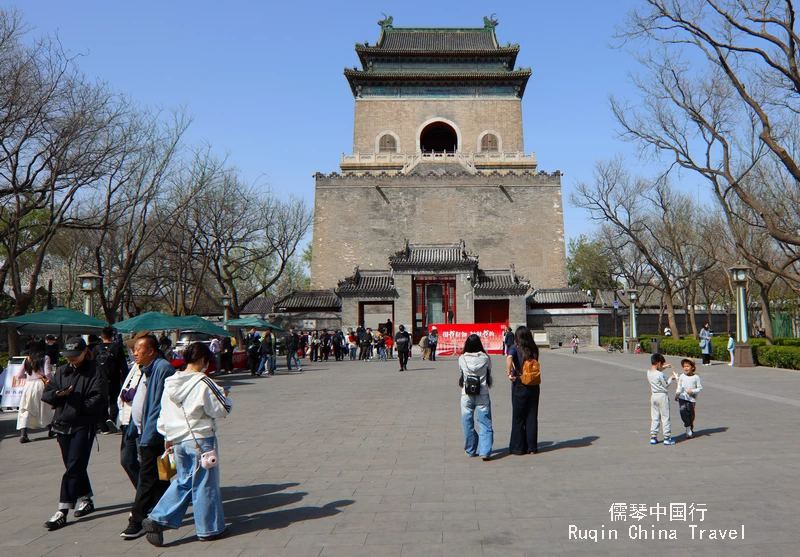
Most impressively, the second floor holds the massive “King of Ancient Bells.” Cast during the Yongle era of the Ming Dynasty, this bronze giant is 7.02 meters high, 3.4 meters wide, and weighs 63 tons. Crafted from a copper-tin alloy, it produces a deep, echoing tone. In ancient times, its sound traveled over 10 li (5 km), making it a marvel of both metallurgy and acoustics.
When you visit, don’t just look—listen. You’ll hear history ring through the silence.
2. Architectural Wonders: A Brilliant Acoustic Masterpiece
Climbing the Bell Tower is a must-do. Enter through a small archway at the northeast corner, then take on 75 steep stone steps. These steps carry meaning—60 for the ancient calendar cycle, and 15 for imperial symbolism.
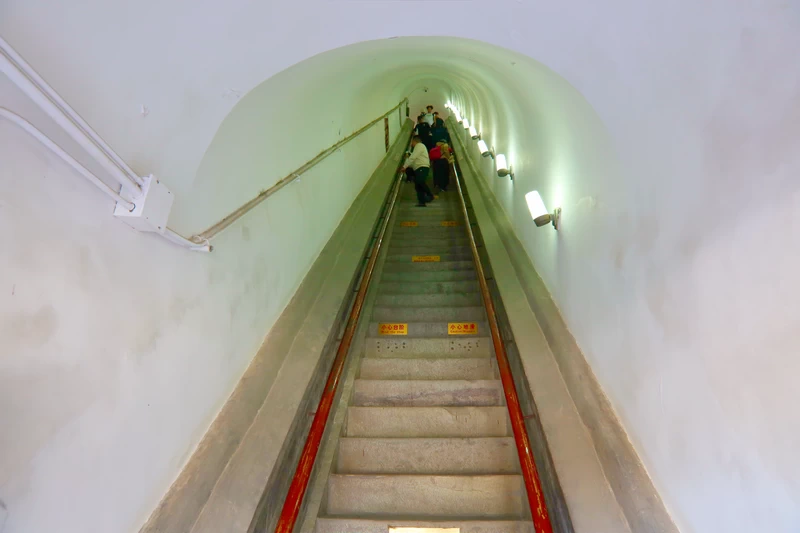
As you climb, notice the solid brick-and-stone structure. Qing Dynasty builders chose this design to prevent fires, making it rare among China’s mostly wooden ancient buildings.
At the top, you’ll find the massive “King of Ancient Bells” hanging in the center of an octagonal wooden frame. But the tower itself is part of the magic. The four arched openings on each level form a cross-shaped sound chamber, turning the building into a giant amplifier.
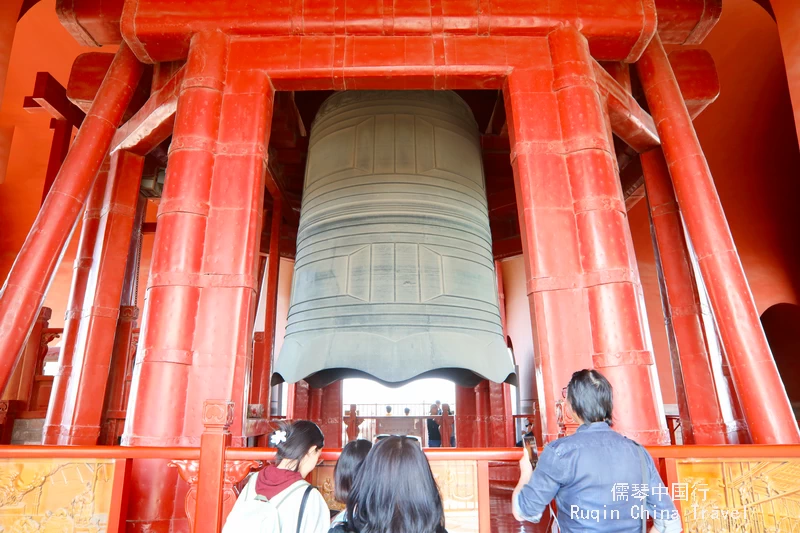
According to the Chinese Academy of Sciences, this design lets the bell’s sound travel up to 4 kilometers, and even 10 kilometers at full volume.
How did ancient builders lift the 63-ton bell without machines? One theory says they built a dirt ramp to the tower’s height, then used manpower to hoist it. In winter, they may have poured water to create ice ramps, reducing friction.
This clever, resourceful engineering shows just how advanced ancient Chinese craftsmanship truly was.
3. Timekeeping Traditions: How Ancient Beijing Measured the Day
Long before smartphones and wristwatches, Beijing relied on the Bell and Drum Towers to tell time. Together, they formed the royal timekeeping center during the Yuan, Ming, and Qing dynasties. The system wasn’t just bells and drums—it combined water clocks, incense timers, engraved tablets, and a precise daily routine.
Ancient Chinese divided the night into five “geng” (watches), each about two hours. The timekeeping routine was strict. Each day started with the Evening Drum and ended with the Morning Bell. During the first and fifth watch, they sounded both drums and bells. During the second to fourth watches, only the bell rang.
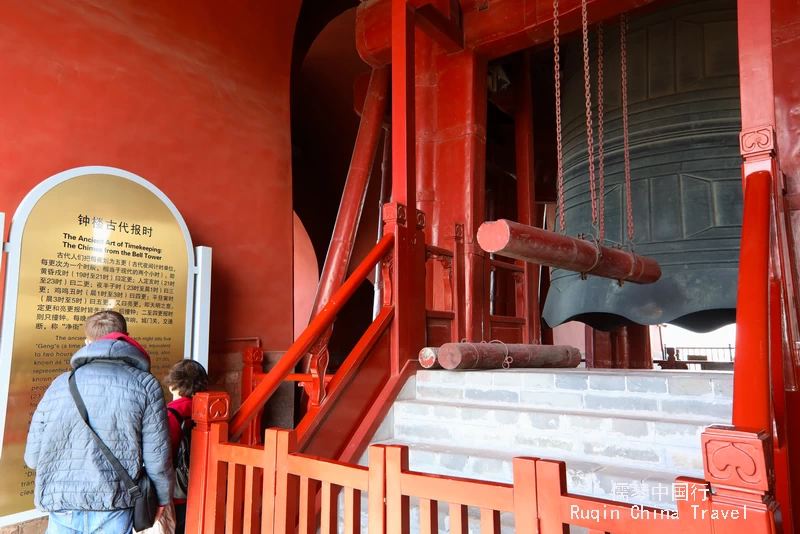
Next, here’s something fascinating: each bell and drum strike followed a special rhythm—“fast 18, slow 18, moderate 18”—and this pattern repeated twice to total 108 beats.
Why 108? It symbolized a full year: 12 months, 24 solar terms, and 72 pentads, ancient five-day weather markers. Together, they add up perfectly.
Once the bell rang, the city gates closed and the streets emptied. Only the night watchmen, carrying clappers and gongs, walked the quiet alleys. Their steady beat guided the city to sleep.
This timekeeping system wasn’t just practical—it reflected ancient China’s deep respect for order, rhythm, and time.
4. Modern Encounters: Where Tradition Meets Innovation
Today, the Bell Tower no longer keeps time, but it’s far from silent. Thanks to creative exhibitions and engaging experiences, this ancient structure is alive with new energy. One highlight is the “Stories of Time” exhibition on the first floor of the Drum Tower. It uses immersive digital displays to transform abstract history into something vivid and touchable.

Additionally, tech lovers can explore the AR experience in the “Discover the Central Axis” gallery. Just put on AR glasses, and you can “climb” to the second floor—without using the steep wooden stairs. Even better, you can time-travel back over 700 years to watch the founding of Yuan Dynasty Beijing unfold before your eyes. This high-tech approach breathes new life into ancient heritage.
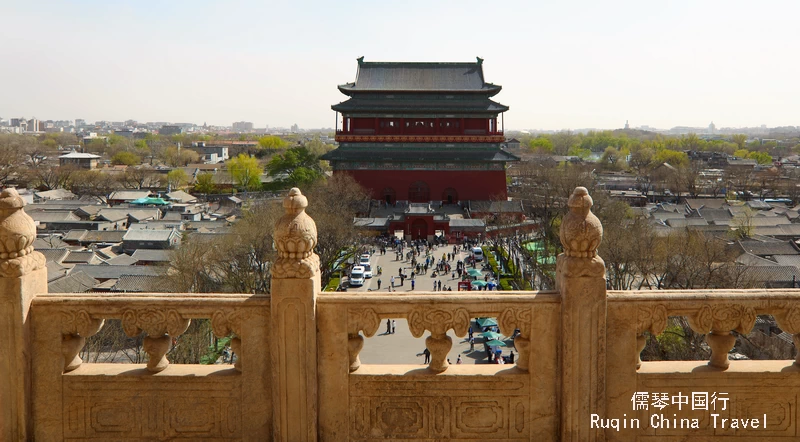
Outside, the Bell and Drum Tower square has become a vibrant cultural space. Every Spring Festival, the “Bells and Drums Welcome the New Year” celebration draws huge crowds. Moreover, visitors enjoy book fairs, art shows, and even light displays throughout the year.
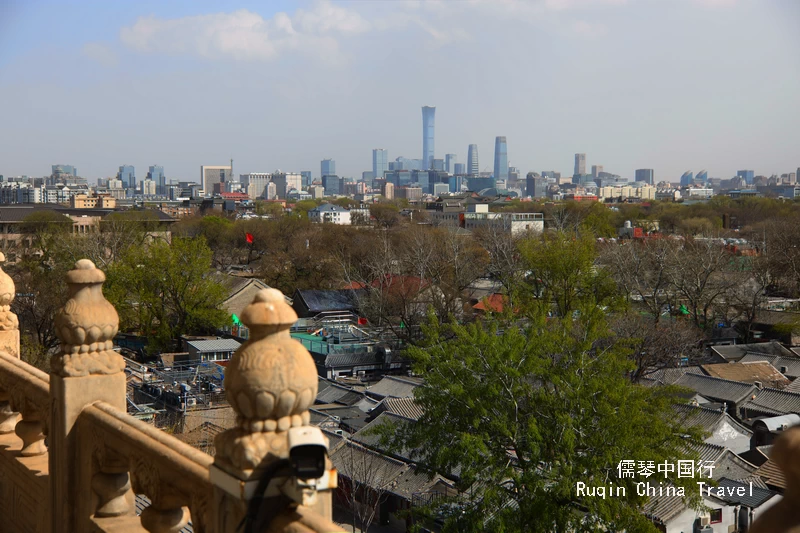
Finally, don’t miss the view from the tower’s corridor. Look west to spot the National Centre for the Performing Arts, north to the Olympic Park, and east to the CBD skyline. Here, ancient and modern Beijing blend in one breathtaking panorama. Local Life Around the Bell Tower: A Glimpse of Old Beijing.
5. Local Life Around the Bell Tower: A Glimpse of Old Beijing
Your visit to the Bell Tower shouldn’t end at the building itself. Just outside, the surrounding hutongs (alleyways) capture the real heart of old Beijing. In the square between the Bell and Drum Towers, you’ll often see locals playing shuttlecock, twirling ribbons, spinning tops, or jumping rope. These lively scenes are everyday life here. Why not join in? It’s a fun and authentic way to connect with locals—and it might just become your favorite memory.
Next, walk about 200 meters southwest, and you’ll arrive at Shichahai Bar Street. This area beautifully blends old charm with modern vibes.
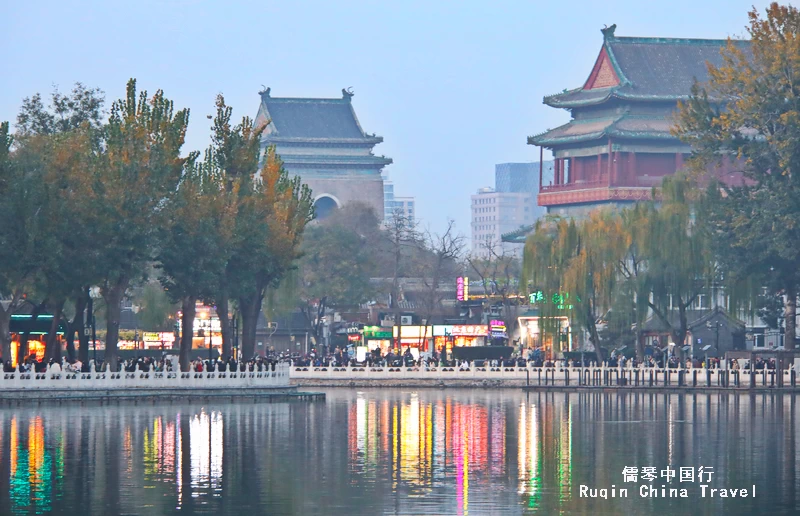
Along the way, don’t miss Yandai Xiejie, a 900-meter-long pedestrian street filled with traditional shops and cultural treasures.
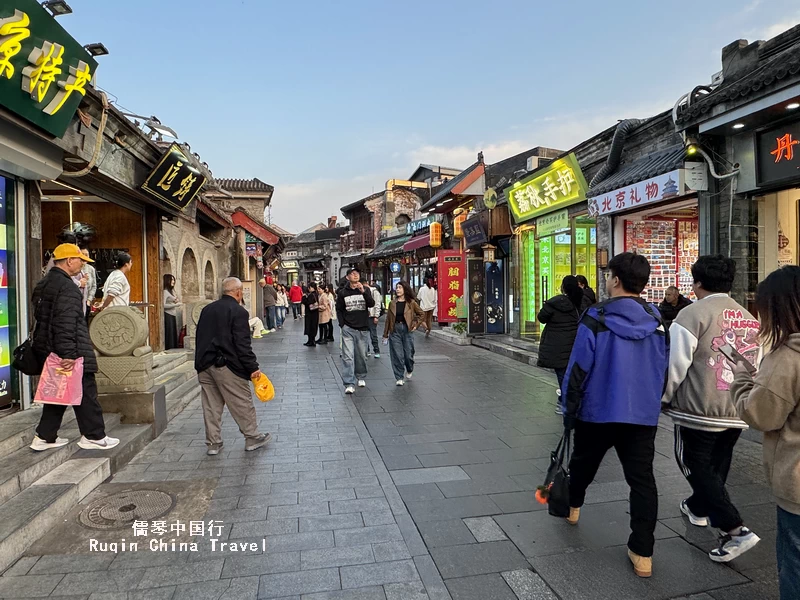
Keep walking, and you’ll reach Houhai, a scenic lake area. Stop by Kaorou Ji, a time-honored restaurant near Yinding Bridge, and try their famous roasted lamb.
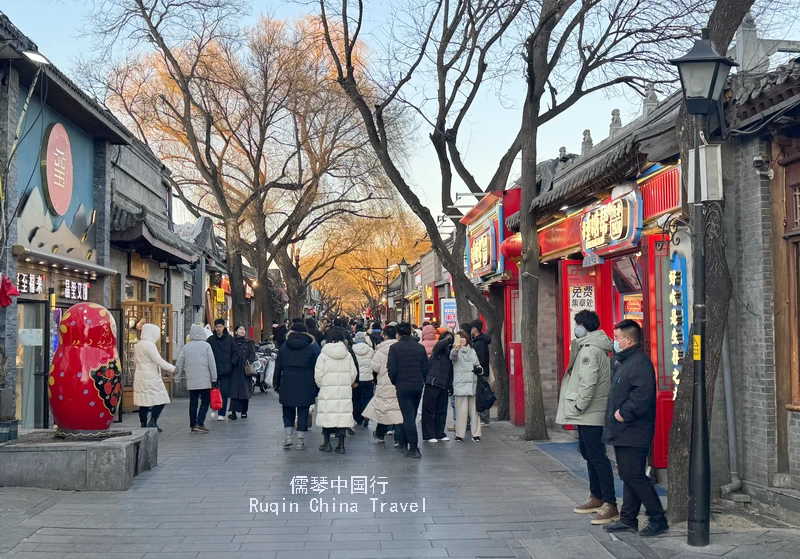
Additionally, just 1.5 kilometers south lies Nanluoguxiang, one of Beijing’s best-preserved Yuan Dynasty alley neighborhoods. Today, it’s home to creative boutiques, cozy cafés, and quirky bars.
Altogether, exploring the area around the Bell Tower offers a rare chance to step into Beijing’s past while enjoying its present.
6. Visitor Tips: What You Need to Know Before You Go
Tickets and Hours
A ticket for the Bell Tower alone costs 15 RMB (half-price: 7 RMB). A combo ticket for both the Bell and Drum Towers is 30 RMB.
Opening hours vary by season. From April to October, it’s open 9:00–17:30. From November to March, hours shift to 10:00–17:00.
Discounts apply for students, military personnel, and seniors over 60 (with valid ID). Visitors over 70, children under 1.2 meters, and people with disabilities enter for free.
Getting There
Take Subway Line 8 to Shichahai Station, exit from A2, and walk for about 10 minutes.
Alternatively, ride buses 5, 60, 107, 124, or 734 to the Drum Tower stop.
From Beijing Railway Station, take Subway Line 2, transfer at Gulou Dajie, and hop on Bus 60.
Best Time to Visit
Spring and fall are ideal, especially September to October. The weather is cool and pleasant.
Visit in the morning to avoid large crowds.
For the drum performance, head to the Drum Tower. Shows run hourly, inspired by traditional seasonal rhythms.
Tips for Your Visit
The stairs inside the Bell Tower are steep—watch your step.
Some rooms are dimly lit, so move carefully.
Please respect the heritage site. Don’t touch the ancient bell or exhibits.
Finally, the nearby hutongs are narrow, so walking or biking is your best option.
👉Explore All Beijing Tours & Excursions with local guides via Viator — an unforgettable, immersive experience
👉 Book your Beijing Hutong Tours with guides via Viator using the links below—an unforgettable and immersive travel experience:
Visiting the Beijing Bell Tower is more than just checking off a historic site—it’s stepping into the heartbeat of ancient Beijing. From its towering architecture to its powerful bronze bell, every stone and sound tells a story that echoes across centuries.
Whether you’re climbing steep steps, tracing the rhythm of old timekeeping, or wandering through nearby hutongs, the experience connects you to a living heritage. Additionally, with immersive exhibitions and a buzzing local culture scene all around, your journey blends the past and present in the most unexpected ways.
So next time you hear the deep toll of a bell in the distance, let it remind you of this timeless corner of Beijing. It’s a place where history doesn’t just sit in silence—it rings out loud for those who listen.
📷 Don’t forget your camera—and your curiosity. The Bell Tower is waiting.

